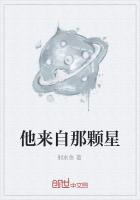Another peculiarity of Canon Diablo meteorite is that it contains diamonds. When the meteorite was first discovered by a Mexican sheep herder he supposed that he had found a large piece of silver, because of its great weight and luster, but he was soon informed of his mistake. Not long afterwards a white prospector who heard of the discovery undertook to use it to his own advantage, by claiming that he had found a mine of pure iron, which he offered for sale. In an attempt to dispose of the property samples of the ore were sent east for investigation.
Some of the stone fell into the hands of Dr. Foote, who pronounced it to be meteorite and of celestial origin.
Sir William Crookes in discussing the theory of the meteoric origin of diamonds[4] says "the most striking confirmation of the meteoric theory comes from Arizona. Here, on a broad open plain, over an area about five miles in diameter, were scattered from one to two thousand masses of metallic iron, the fragments varying in weight from half a ton to a fraction of an ounce.
There is little doubt that these masses formed part of a meteorite shower, although no record exists as to when the fall took place. Curiously enough, near the center, where most of the meteoritics have been found, is a crater with raised edges three quarters of a mile in diameter and about six hundred feet deep, bearing exactly the appearance which would be produced had a mighty mass of iron or falling star struck the ground, scattering in all directions, and buried itself deep under the surface.
Altogether ten tons of this iron have been collected, and specimens of Canyon Diablo Meteorite are in most collectors'
cabinets.
[4] Diamonds. Wm. Crookes, F.R.S. Smithsonian Report. 1897.
"An ardent mineralogist, the late Dr. Foote, in cutting a section of this meteorite, found the tools were injured by something vastly harder than metallic iron, and an emery wheel used in grinding the iron had been ruined. He examined the specimen chemically, and soon after announced to the scientific world that the Canyon Diablo Meteorite contained black and transparent diamonds. This startling discovery was afterwards verified by Professors Friedel and Moissan, who found that the Canyon Diablo Meteorite contained the three varieties of carbon--diamond (transparent and black), graphite and amorphous carbon. Since this revelation the search for diamonds in meteorites has occupied the attention of chemists all over the world.
"Here, then, we have absolute proof of the truth of the meteoric theory. Under atmospheric influences the iron would rapidly oxidize and rust away, coloring the adjacent soil with red oxide of iron. The meteoric diamonds would be unaffected and left on the surface to be found by explorers when oxidation had removed the last proof of their celestial origin. That there are still lumps of iron left in Arizona is merely due to the extreme dryness of the climate and the comparatively short time that the iron has been on our planet. We are here witnesses to the course of an event which may have happened in geologic times anywhere on the earth's surface.
About a year ago several mineral claims were located in the crater by a company of scientific and moneyed men. The required assessment work was done and a patent for the land obtained from the government. The object of the enterprise is for a double purpose, if possible to solve the mystery of the mountain, and if successful in finding the "hypothetic buried star " to excavate and appropriate it for its valuable iron.
A shaft has been sunk one hundred and ninety-five feet deep, where a strong flow of water was encountered in a bed of white sand which temporarily stopped the work. A gasoline engine and drill were procured and put in operation and the drill was driven down forty feet further when it stuck fast in white quicksand.
It is the intention of the company to continue the work and carry it on to a successful finish.
Nothing of value was found in the hole dug, but some of the workmen in their leisure hours found on the surface two large meteorites weighing one hundred and one hundred and fifty pounds respectively, besides a number of smaller fragments.
The Meteorite Mountain is in a class by itself and is, in a way, as great a curiosity as is the Grand Canon. It is little known and has not received the attention that it deserves.
It is, indeed, marvelous and only needs to be seen to be appreciated.















